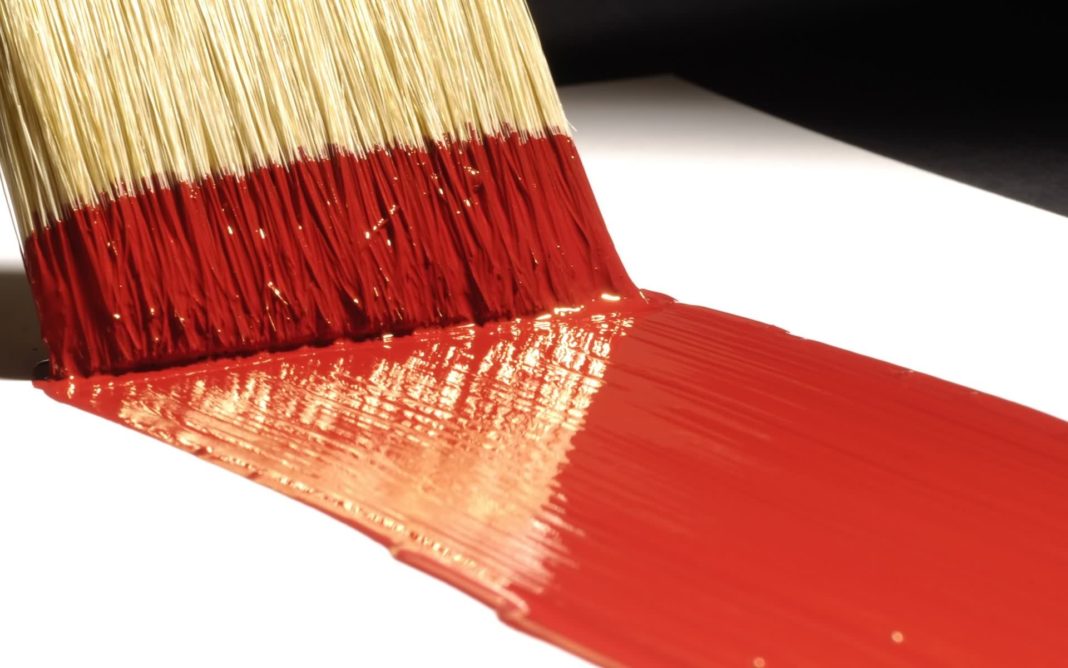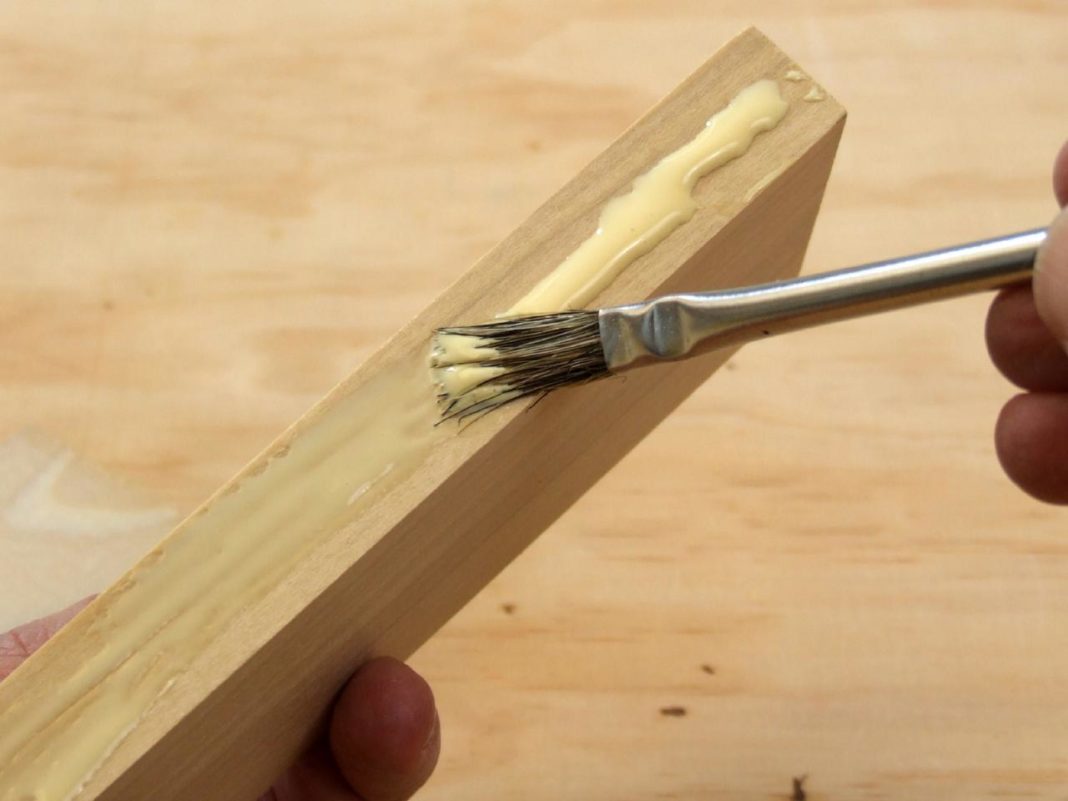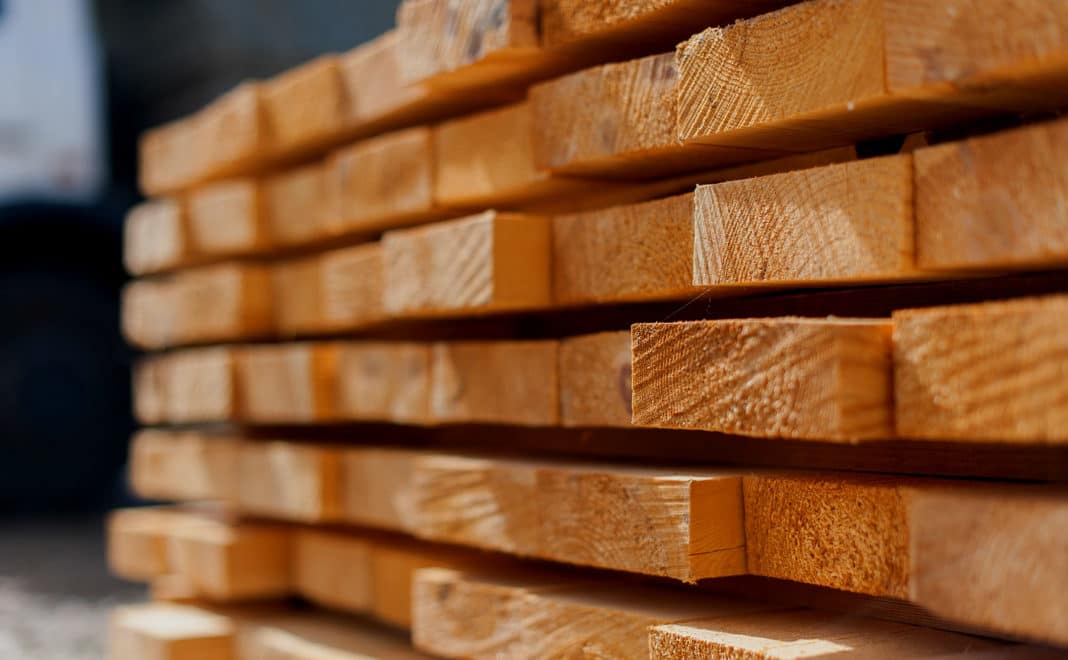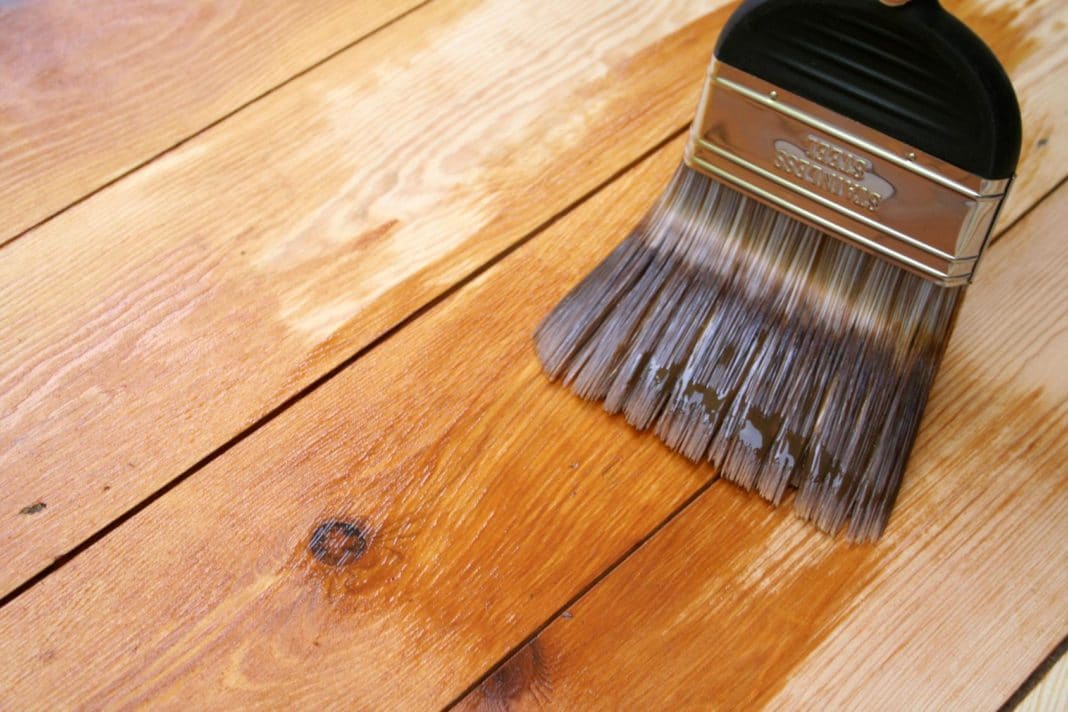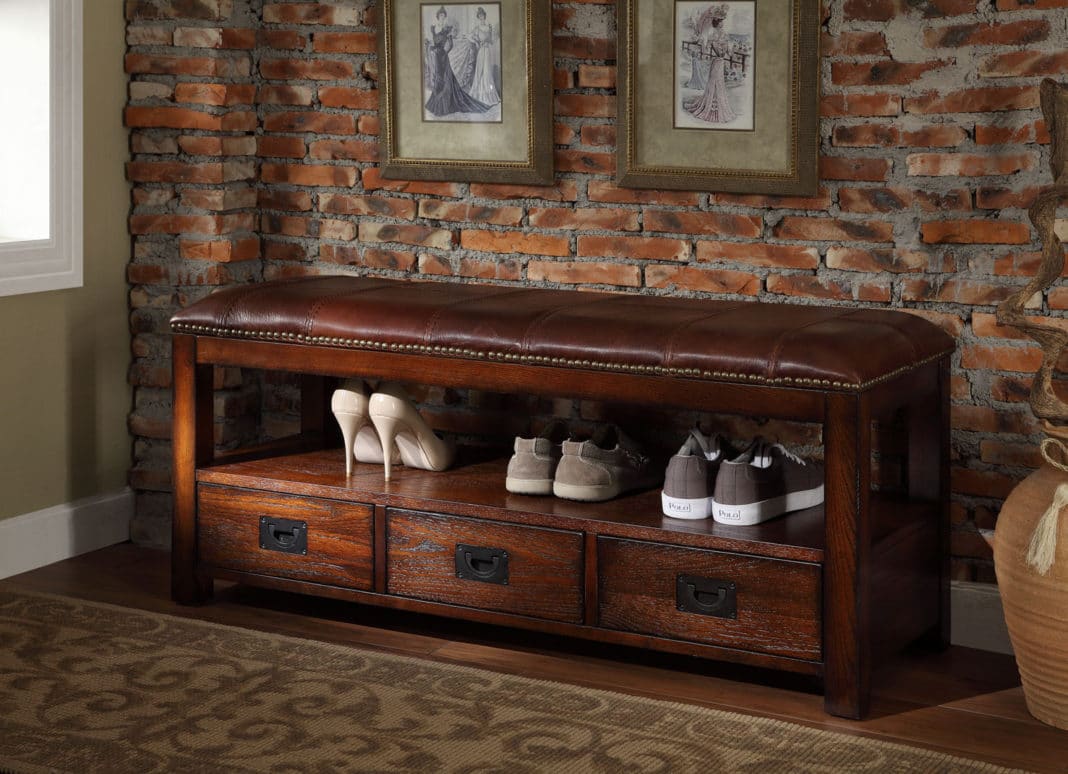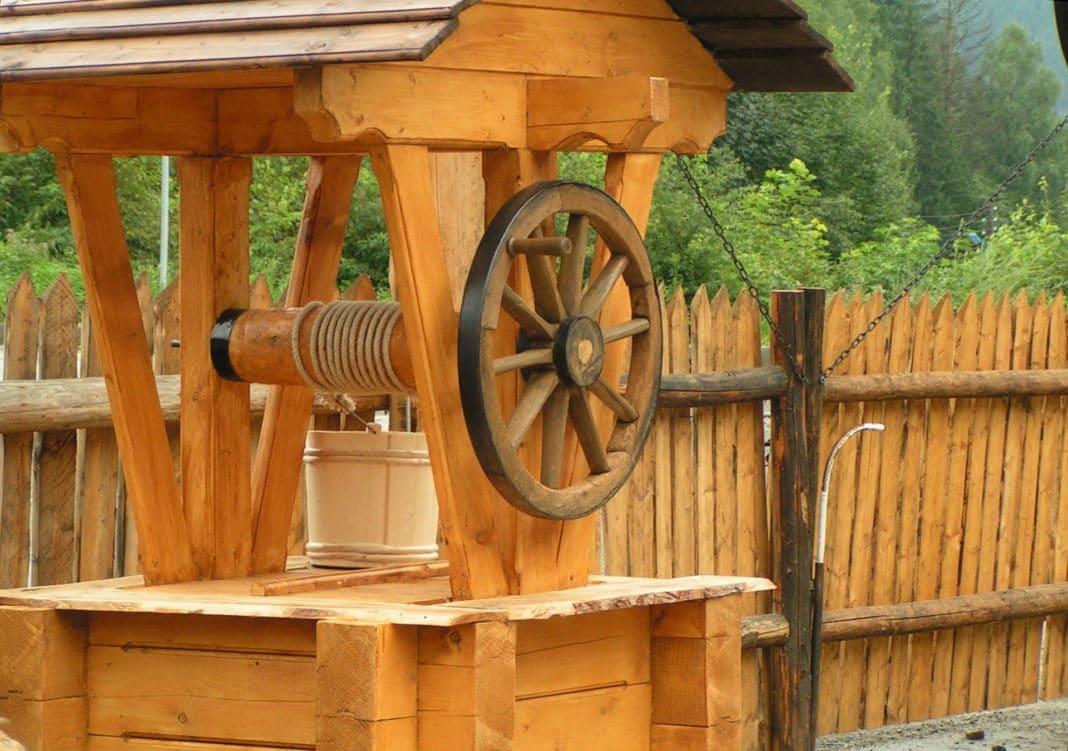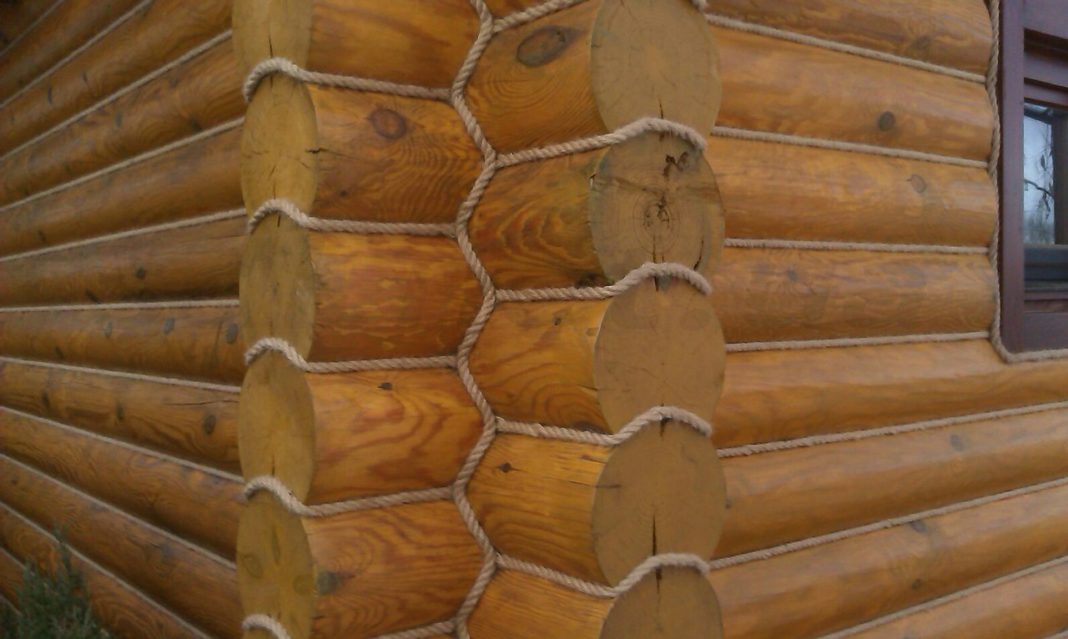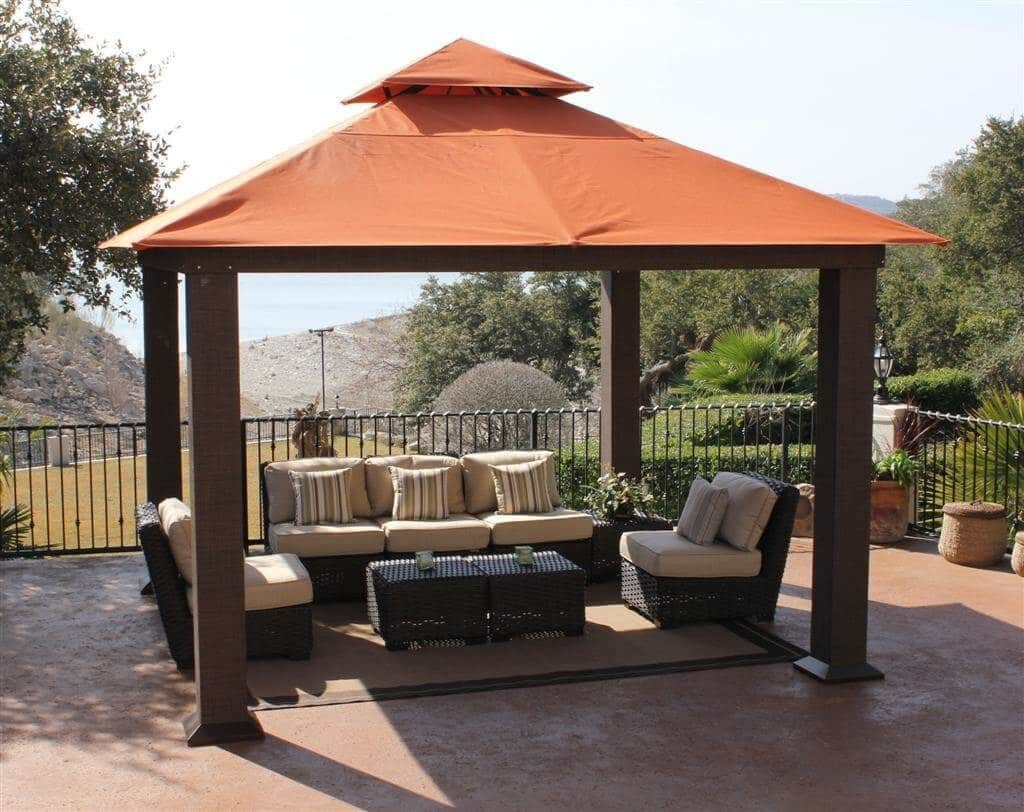Fire protection of wood helps to prevent the ignition of wooden structures. There are special compositions and materials that enhance their fire safety.
Fire Retardant Paints
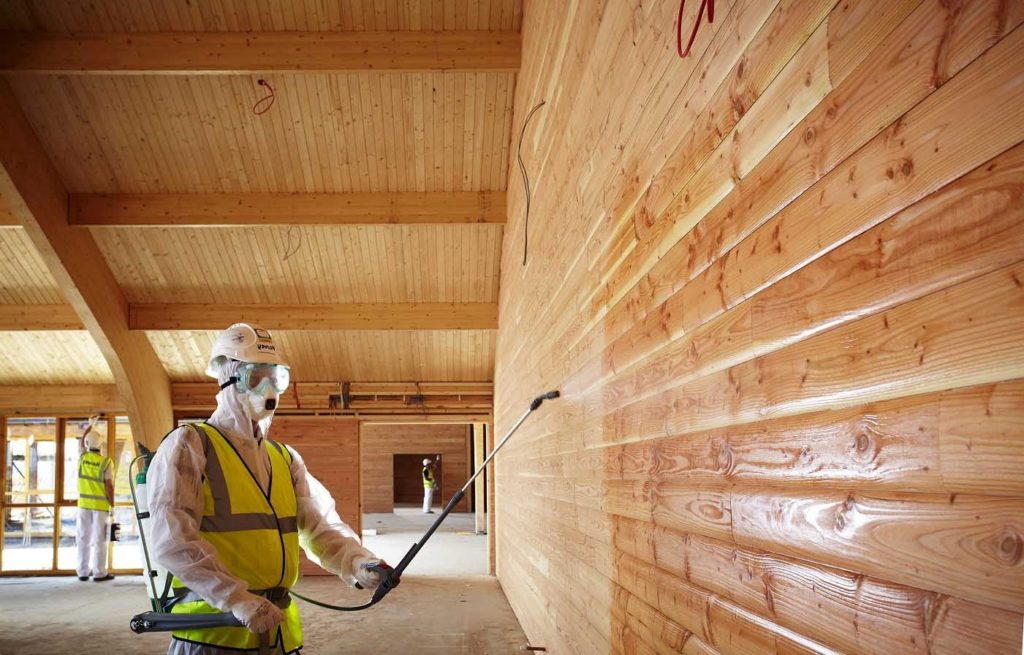
Painting wood
When these special compositions are applied to a wooden surface, a protective layer is formed that prevents the wood from heating up and igniting. Fire retardant paints come in two types: intumescent and non-intumescent. Each has its own properties.
When exposed to high temperatures, intumescent paint increases in thickness and begins to crack. The foamed layer can withstand fire for up to 2 hours.
Non-intumescent paint contains liquid glass and fire retardant fillers. They provide good resistance to fire and can last for 1.5-2 hours.
These compositions can be applied at home using a sprayer or roller. The next treatment will be needed only after 10 years.
Fire Retardant Varnishes for Wood

Varnish for wood
These varnishes are designed to treat surfaces to decorate them and increase the wood’s resistance to fire. Varnish preserves the beautiful appearance and natural structure. These fire-resistant compositions are used to treat:
- load-bearing structures;
- walls;
- floors.
Matte and semi-matte varnishes are available. Fire retardant treatment with varnishes inside a room should be carried out every 10 years, outside – every 6 years. It should be applied to a pre-painted surface, except for structures that have been treated with a water-dispersion composition.
The features of using such protective agents include the following:
- Work with varnishes should be done at a temperature not lower than +5°C.
- The interval between the application of the next layer should be no less than 12 hours.
- With each subsequent layer, the wood’s resistance to fire increases.
Fire-resistant varnishes and paints are considered very dense coatings. The presence of pigment gives the treated surface excellent decorative properties, but its beauty is completely hidden.
Fire Retardant Impregnations for Wooden Structures
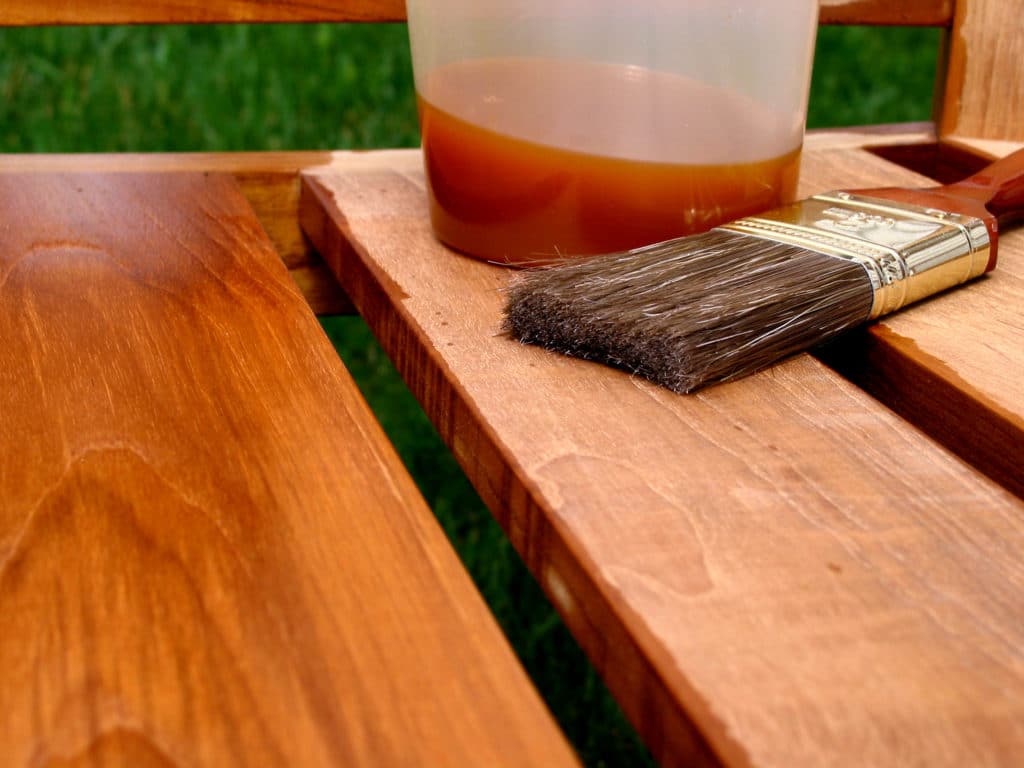
Impregnation for wood
The most common fire-resistant materials are various impregnations. There are 2 main types of impregnation compositions: surface and deep.
Surface impregnation is inexpensive, so many people prefer to buy it. Working with such compositions at home, applying them by hand to wooden surfaces, is very easy. For this, it is enough to have a roller, an ordinary brush, or a sprayer. The impregnation contains antipyrenes, which have the property of preventing wood from burning. However, they cannot penetrate deeply into it, which limits the protective characteristics of this type of impregnation composition.
The application of deep colorless fire-resistant impregnation for wood is carried out in an autoclave or by the hot-cold bath method. Such work can be done at home, but the result will be slightly worse than in production conditions. To apply deep impregnation, the beam must be soaked in a container and then dried naturally.
It should be noted that its deeper penetration into the wood body contributes to better protection of the structure from flames. Fire retardant impregnation can protect wooden structures only if:
- applied strictly according to a certain technology;
- norms of consumption are observed;
- the normative time between repeated applications is observed, etc.
The wood grain under impregnations is visible perfectly.
Salt and Non-Salt Water-Soluble Impregnations
In most cases, fire-resistant compositions are used to treat wooden structures that are not exposed to moisture for a long time. Water-soluble impregnations can be salt and non-salt.
Salt impregnations have been known for a long time. And they are still used frequently due to their low cost. They contain salts of minerals of such acids as:
- boric;
- phosphoric;
- carbonic.
Salt compositions have many disadvantages, including:
- weak adhesion;
- short service life;
- low level of protection;
- significant consumption;
- impossibility of subsequent treatment with paint and varnish materials.
It should be noted that such impregnations can be easily washed off with water, which reduces the scope of their application. It is forbidden to use them in all rooms where there is high humidity: saunas, steam rooms. The sphere of use of such impregnation is moisture-protected wood located inside the room.
Non-salt water-soluble agents have significantly more advantages. One of them is the ability to impregnate wood in such a way that they bind with the fibers at the chemical level. This property helps them to fix in it for a long time.
Other advantages include:
- excellent level of protection;
- absolute safety for human health;
- the ability to varnish and paint the treated wood.
Non-salt impregnations do not spoil the appearance of the wood.
All chemical agents for protecting wooden structures from fire contain antipyrenes. These are substances or mixtures that block the ignition of the treated surface. When exposed to flame on the wood, they begin to act in a certain way. The first thing that happens is swelling, and then the foamed surface does not allow direct contact of the fire with the wood. Simultaneously, gas is released, additionally creating a protective cloud.
The constituent mixtures begin to decompose. They release gases capable of reducing combustion. And also melt and elements present in the composition. This leads to the formation of a film on the wooden surface, reducing the access of oxygen.
Choosing Fire Retardant Impregnation
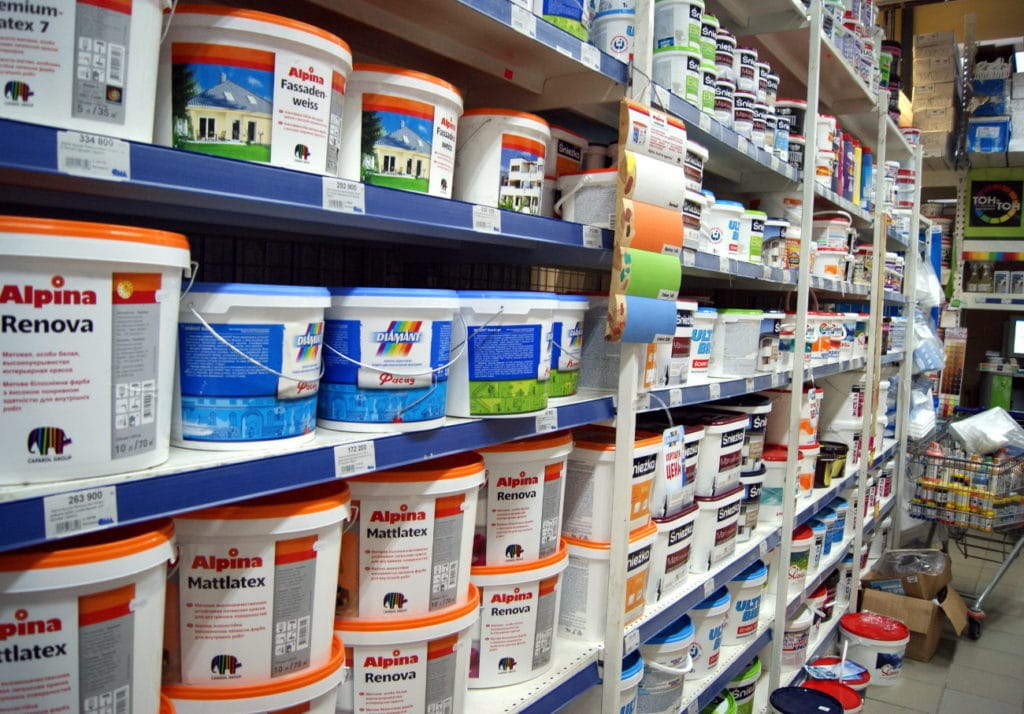
Choosing fire retardant impregnation
On the construction market, fire protection agents with complex action are most often sold. They contain antipyrenes and antiseptics. When buying such impregnations, it is necessary to make sure that there is a certificate and pay attention to:
- the service life of the fire-resistant composition;
- the group of effectiveness;
- the type and consumption of the solution;
- the change in the color of the wood.
It is necessary to find out whether it is possible to subsequently treat the wood with paint and varnish materials. For working with wooden surfaces in winter, there are special fire-resistant materials.
In most cases, it is necessary to improve fire protection in an already built room, so it is not possible to carry out deep impregnation at home. There are compositions that have the properties of penetrating deeply into the fibers of the wood, but surface treatment does not allow them to manifest sufficiently.
The effectiveness of fire protection can be increased if impregnations and paint and varnish materials are used simultaneously.
Materials and Constructive Fire Protection
To increase the fire resistance of wooden surfaces, materials that help create a fireproof screen or frame can be used, or constructive methods can be applied.
One of the materials for fire protection is non-combustible gypsum fiber boards. In this case, it is necessary to additionally treat them with special solutions. GFBs have the ability to limit the effect of thermal energy on load-bearing structures. Gypsum fiber boards are used in a situation where it is not possible to treat with other compositions for certain reasons.
Another material is foil-insulated insulation. This type of roll protection of wood from fire is mainly used in uninhabited rooms: closed attic and attic floors, hard-to-reach places.
For buildings made of wood, there is constructive fire protection, when special fireproof belts are used, the task of which is to stop the free spread of flame. The development of a safety project using belts should be carried out at the early stage of construction work.
There are also additional means of fire protection of wood. Protecting load-bearing and supporting structures from ignition will help a frame made of brick. You can use a special plaster mixture, which contains vermiculite. If the fire protection is done correctly, this will protect the wood from destruction, not allowing the flame to spread quickly.

